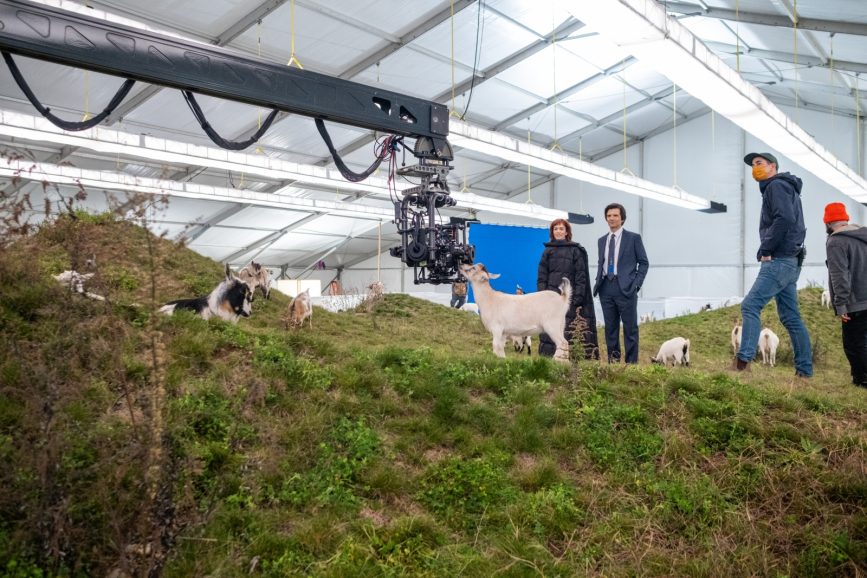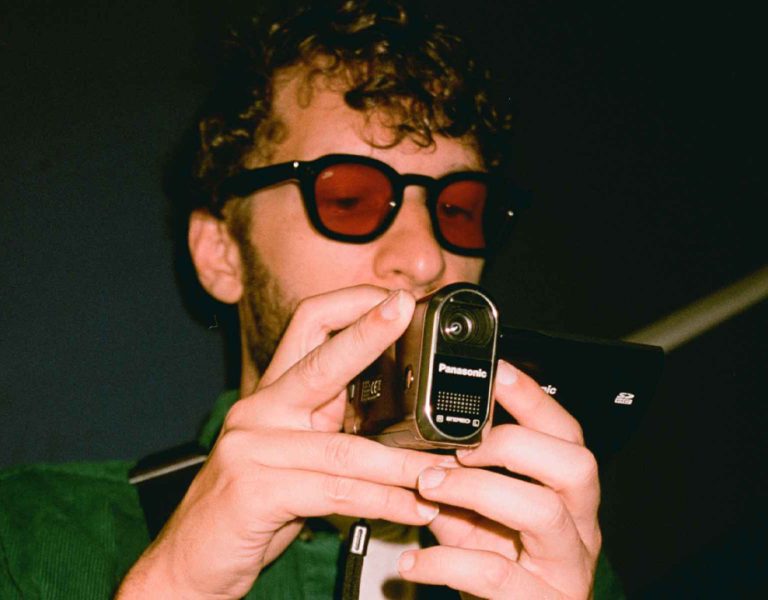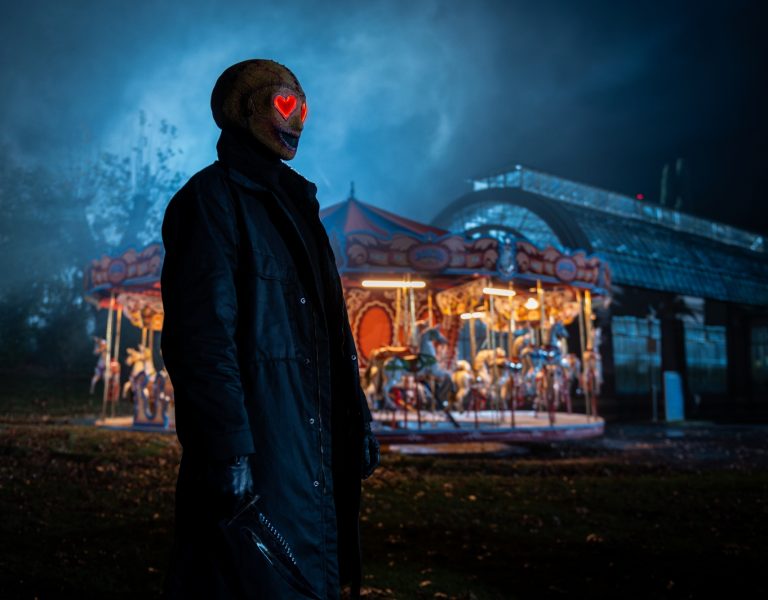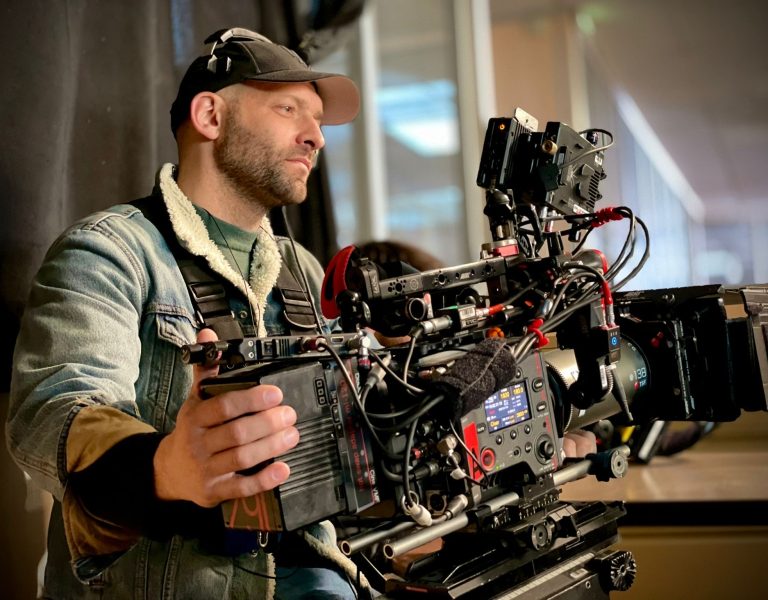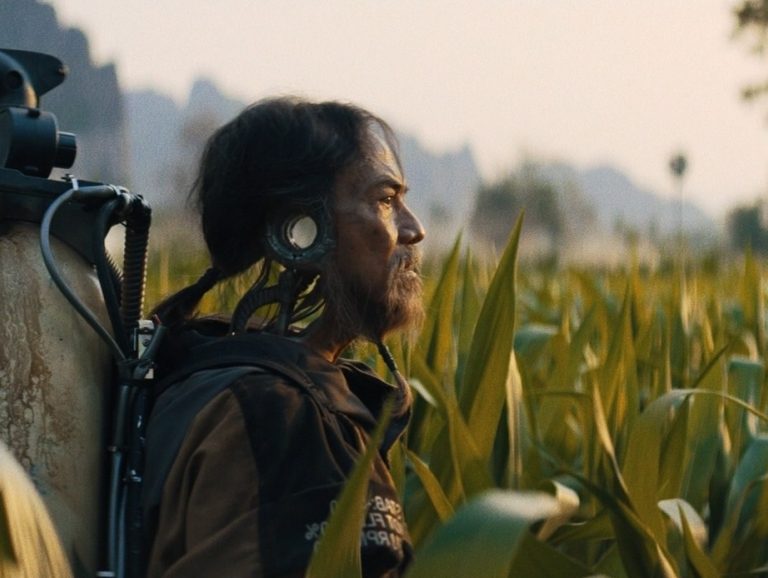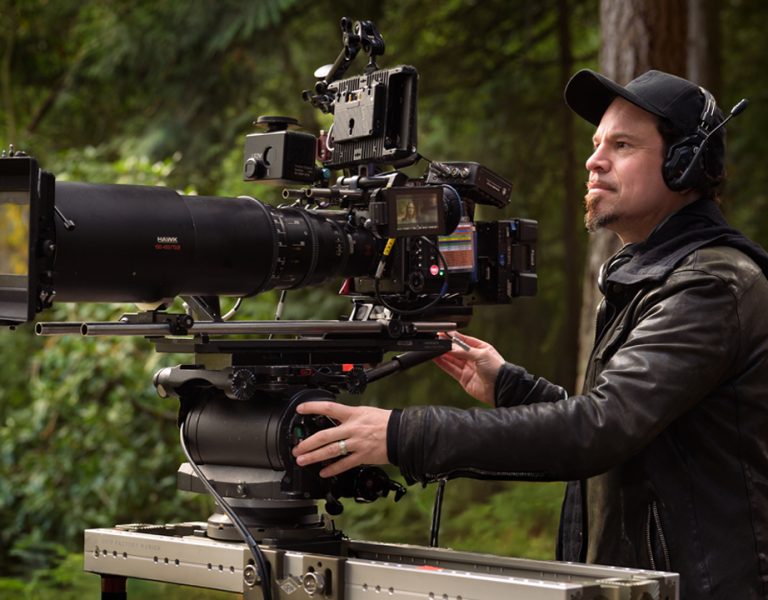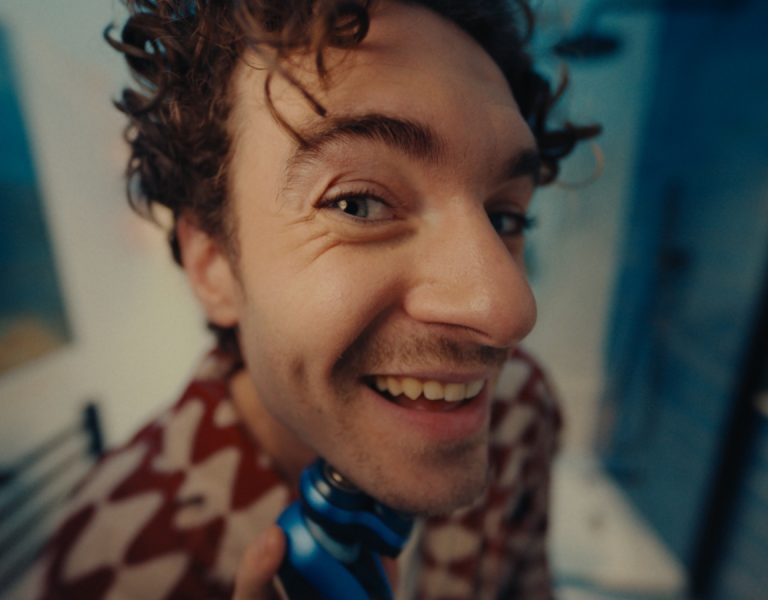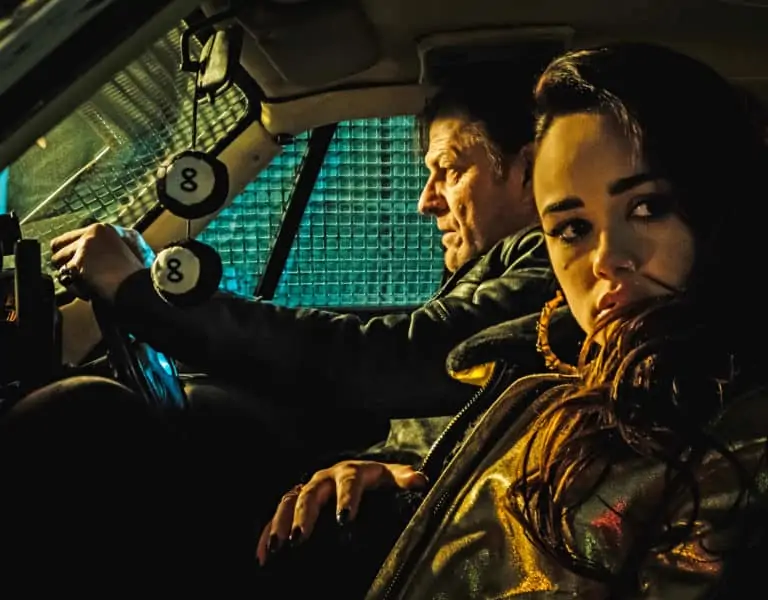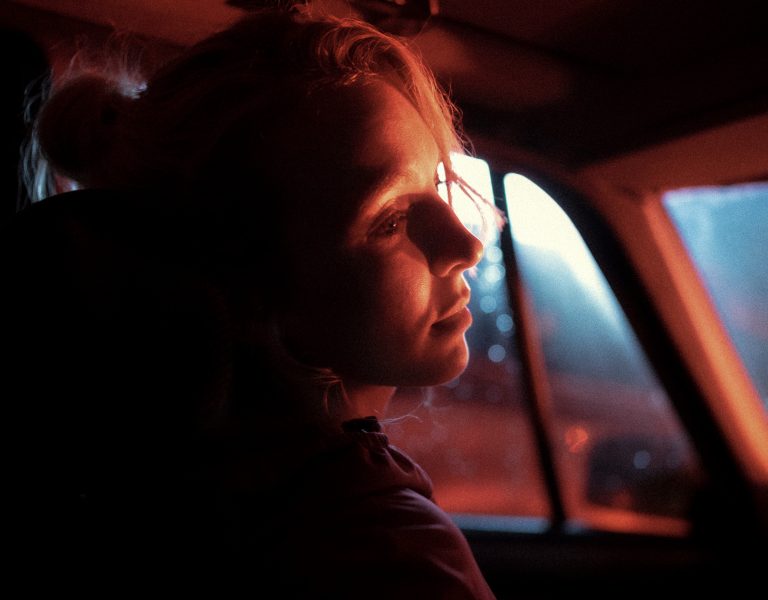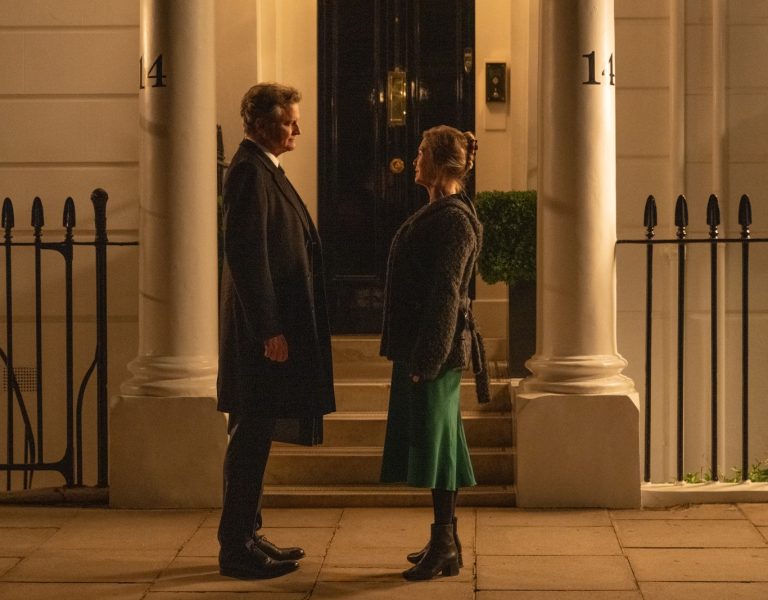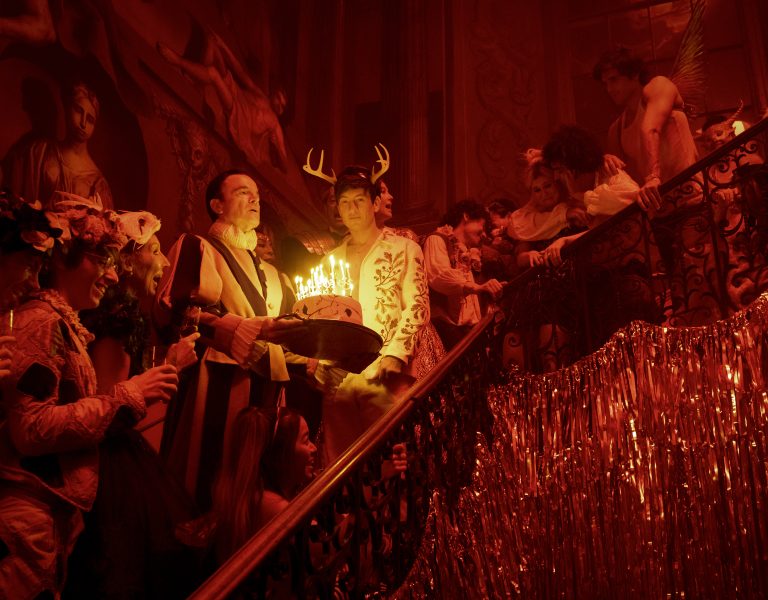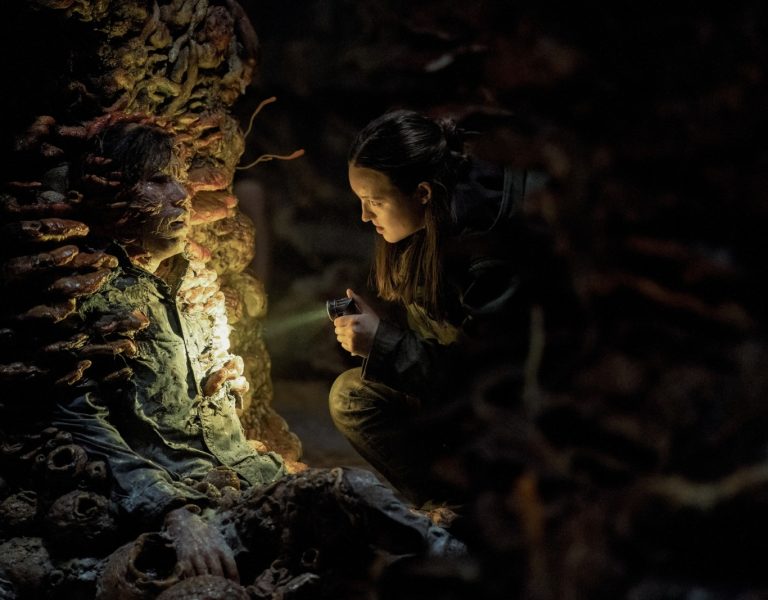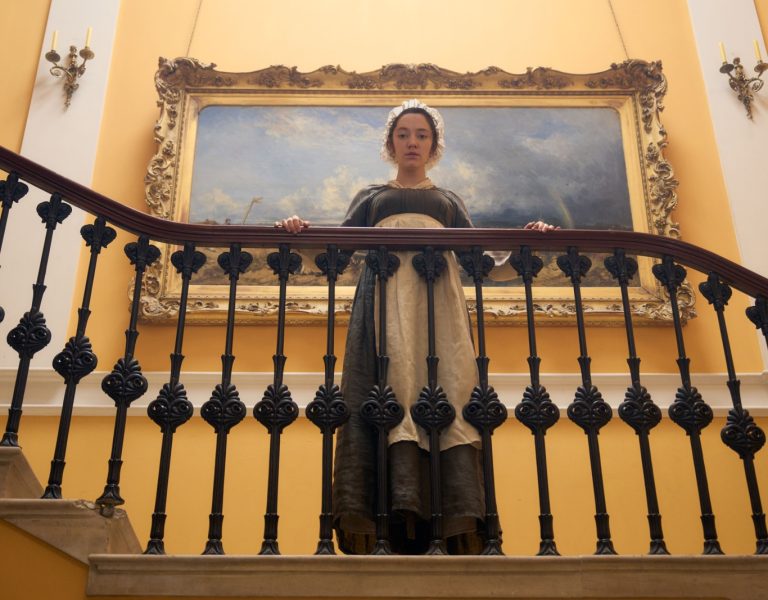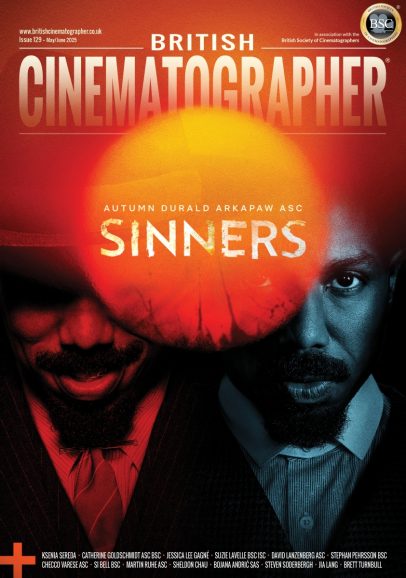BALANCING ACT
Shooting the wacky and wonderful world of work-life imbalance explored in Severance season two saw lead DP Jessica Lee Gagné form an even stronger partnership with the visual effects team and invite Suzie Lavelle BSC ISC and David Lanzenberg ASC on the journey to help realise the world she built alongside director Ben Stiller in season one.
A unique take on the struggle of maintaining a healthy work-life balance, Severance captivated audiences and introduced them to the Innie and Outie worlds. Created by Dan Erickson, the Apple TV+ series follows office workers Mark, Helly, Dylan and Irving whose memories have been surgically divided between their personal (Outie) and work lives on the Severed Floor of the Lumon Industries building.
Despite the buzz now surrounding the series, lead cinematographer Jessica Lee Gagné — who shot season one and six of season two’s 10 episodes — admits she was a little apprehensive when approached to lense Severance. “But what initially pushed me away, ended up making me want to do it: the challenge of the aesthetic world of office spaces. It’s not what cinematographers naturally gravitate towards,” she says. “You want to craft and light things, but you’re in a place with no windows and only top lighting. So I got to flex another thing I love; working with production design teams. Working with production designer Jeremy Hindle and his team was incredibly inspiring.”
One driving force behind the production, Ben Stiller, directed five episodes in season one and five in season two and also served executive producer, collaborating closely with Gagné. For the outside world they adopted a “70s New York filmmaking style” which Stiller and Gagné also explored on 2018 series Escape at Dannemora, both loving “the old school zoom and gritty look with a lot of darkness”.
The white and clinical interior world was captured using “a more paranoid, robotic and close-up approach that felt more immediate in terms of camera presence” — looks Gagné feels “both contradict and complement each other”.
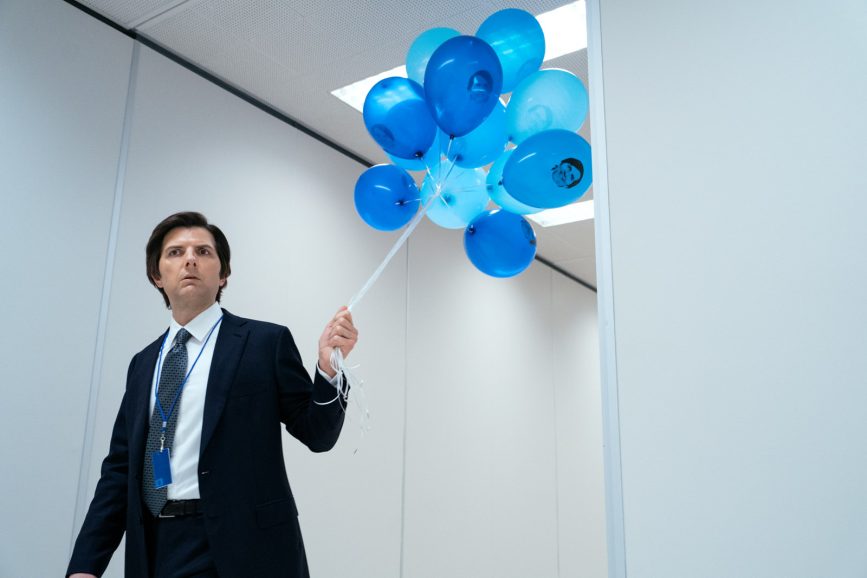
Elevating the imagery
The intention from the beginning of season two, which Stiller initiated, was making the show look “even more high-end and elevated”, leading Gagné to move from the Sony Venice to Venice 2, supplied by Panavision. “We wanted to do as much in-camera but there’s limitations, so season two is more dependent on visual effects and one reason there’s a transition in the visuals.”
Working with production visual effects supervisor Eric Leven and the ILM team, Gagné felt she had access “to the best people in that field”, opening their minds to exploring outside their comfort zone. Leven and his team were involved from the beginning, working with multiple departments through into post to heighten the look. “We were faced with the laws of physics, cost decisions, time decisions, and sometimes it was not smart to do it in-camera,” says Gagné, who had honest conversations with Stiller who was open to considering all options.
The season’s ambitious opening sequence benefitted from exploring multiple avenues. Mark (Adam Scott) exits the elevator and races through a seemingly endless maze of hallways which working with high-impact motion-control tools made it possible to capture. “We realised doing it in-camera would cost more than visual effects to produce the same result,” says Gagné. “Severance isn’t about showing off; it’s about finding the smartest way to achieve the best result.”
Determining how to move the camera as fast as required within a small space was aided by pre vis to explore how fast and where Mark would run. Gagné then broke down the sequence into sections and discussed which tools to use for each with visual effects, grip, and camera departments.
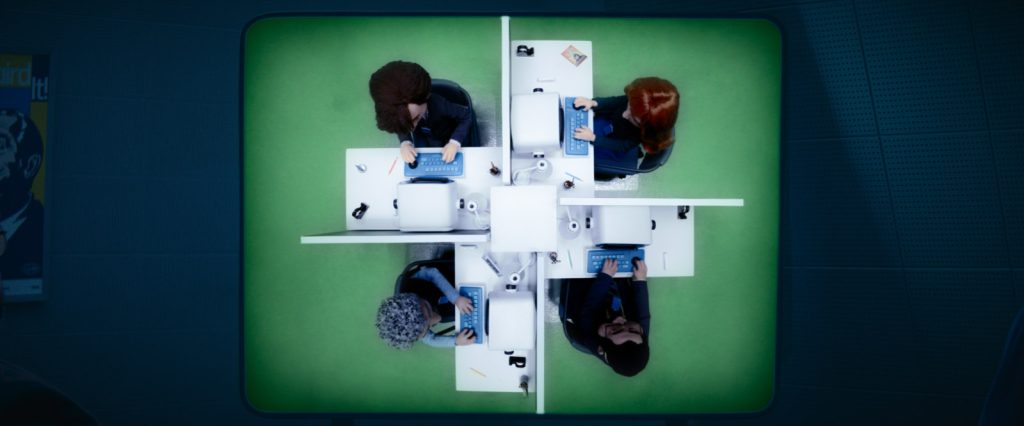
“Certain camera tools were not cost effective or suitable, leading us to shoot the first part of the shot using Mark Roberts Motion Control long-reach Bolt X Cinebot motion control, achieving a perfect 540 degree shot around Mark’s head,” explains Leven. “Moving the camera swiftly and safely was not possible with a dolly on a circular track because after the shot you have to move forward, so you have to get off the track. You couldn’t use Steadicam because you needed perfect precision.”
Gagné praises the work of motion control operator Dan Gottesman from The Garage (which supplied the Bolt X), carrying out all Bolt work and being an important partner for Leven. “As well as the Bolt shots and Technocrane green screen sequences within that opening, we discovered an incredible tool for other parts of the shot thanks to first AC Michael Guthrie: the DJI Ronin 4D which we paired with the small Sony FX3 camera,” says Gagné. “The compact set-up allowed camera operator Grgo Sevo to run with the 4D down the small space of the hallways behind the actor— Grgo’s a full blown athlete and could run while another operator was at the wheels!”
They could also use their chosen 20mm Panavision H Series for that part of the sequence, matching the 19mm-90mm Panavision Primo zoom used for the Bolt shots, following a lengthy testing process through to the grade with Company 3 colourist Tom Poole to ensure visuals matched the Venice 2 footage. “It was seamless. Where we thought we needed stitch points, we realised we didn’t because Grgo was such a great runner,” says Gagné.
Unlike season one, a completely CG version of the Lumon hallways was available for use in the opening including a shot which swings around Mark as the operator tracks, using the Bolt. “Adam [Scott] ran on the treadmill on a big green screen stage, and the camera moved around him,” says Leven. “Everything else in that part of the shot was a CG hallway. Ben enjoyed the flexibility visual effects offered such as changing door shape or extending hallways.”
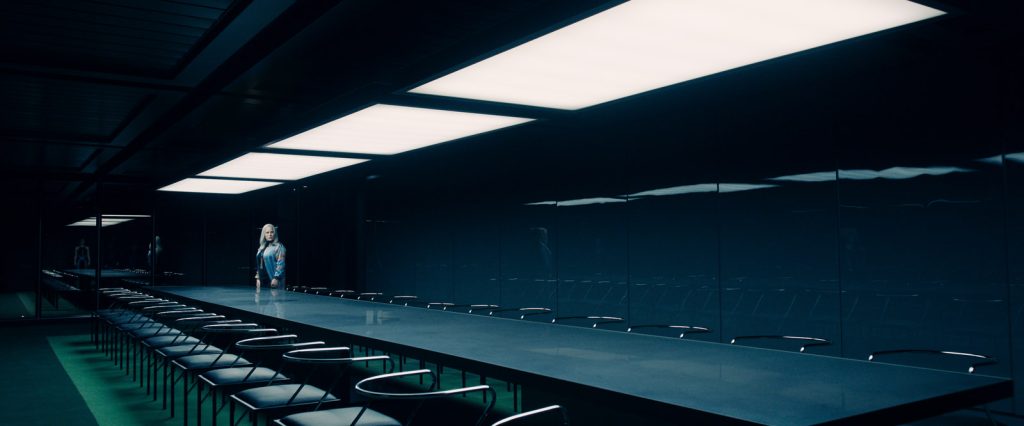
Laws of physics
Detailed references were central to the visual effects approach during which Leven always returns to the laws of physics: “If you don’t execute it with a real physical process, it’s hard to emulate in visual effects. Visual effects offer so much freedom that sometimes limitations help anchor it in reality. With a visual effects team that can support that, you can really elevate the series.”
Gagné and Stiller wanted to try achieving shots for real “because you get real results”, but were open to other approaches. One example is the Lumon building exterior, which Leven highlights is “an incredible piece of architecture you want to try to shoot for real to get everything you can in camera”. The issue faced was the world of Severance is stark, snowy and isolated, but that is not what the Lumon building – Bell Labs office park in Holmdel, New Jersey – looks like in real life. “Towns and cars around it need to be replaced and unfortunately we didn’t get snow, so we had to add that,” he says. “That building is 90% what we wanted, but from a production design standpoint some things need to change.”
Shooting the severed
Season two took over five stages at York Studios in New York including one stage dedicated to exterior worlds such as Mark’s house and another anchored around Miss Cobel’s office, the security room, and elevator lobby from above. Other sets created there include the MDR (Macrodata Refinement) department on the Severed Floor of Lumon Industries where employees refine data, a full stage for the Lumon Testing Floor and a green screen set for Dylan’s house and viewing room.
Extensive scouting delivered the ideal location in which to shoot a forest environment the MDR team visit for an outdoor team building retreat in episode four. Primarily filmed at Minnewaska State Park Preserve in Ulster County, New York, it provided required features such as a waterfall and cave. Gagné praises the VFX team for helping elevate the cinematography as during prep and scouting, the location was completely snow covered and the crew marvelled at its beauty, but when it came to the shoot that snow disappeared. “Only two scenes in the outdoor retreat have practical snow, while all others have enhanced snow and sometimes 100% is replaced in CG, but it holds up well and is invisible,” adds Leven.
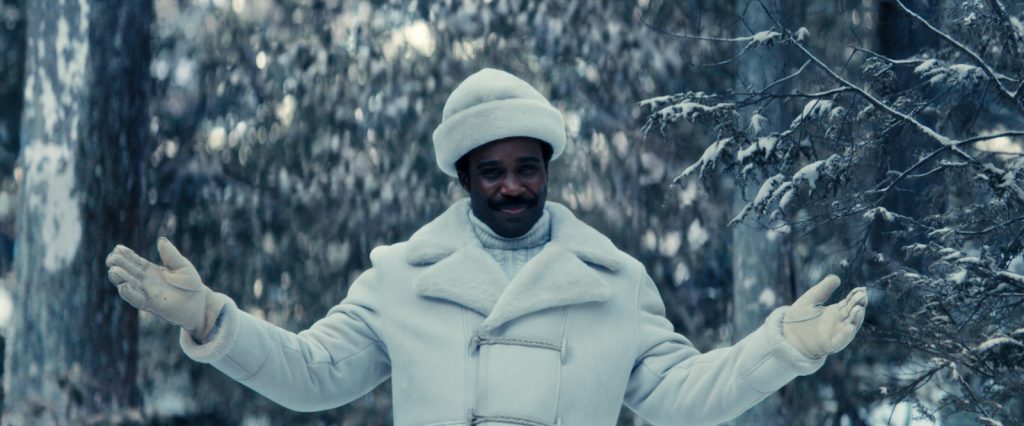
Expanding the dream team
While Gagné was DP on all of season one, as the Severance world expanded in season two, and introduced new characters, locations and strands to the story, two trusted cinematographers were welcomed to craft a pair of episodes each. Suzie Lavelle BSC ISC (Normal People, The End We Start From) lensed episode two (“Goodbye, Mrs. Selvig”) and five (“Trojan’s Horse”) and David Lanzenberg ASC (The Best of Enemies, Age of Adaline and Wednesday) took on cinematographer duties for episode six (“Attila”) and nine (“The After Hours”).
As well as using season one as a core reference they had access to original mood boards, an operator watch list outlining the style of operating, and references the crew had used in season one including photography books Gagné selected focusing on office spaces.
Drawn to productions exploring new visual territory, Lavelle found the series to be unlike anything she had seen. “It’s so beautifully crafted,” says Lavelle, who worked on both episodes with director Sam Donovan who she met on her second feature film in Ireland, leading to further collaborations.
“There was lots to take in and exploring the language, visual rules and way they use space was fascinating. The look of the show is so unique with amazing blacks and texture. High contrast environments are difficult to add texture into, but the team achieved that by pushing the Venice and then the Venice 2. It looks so effortless and seamless from the outside, but Severance is thoroughly thought out and well-constructed.”
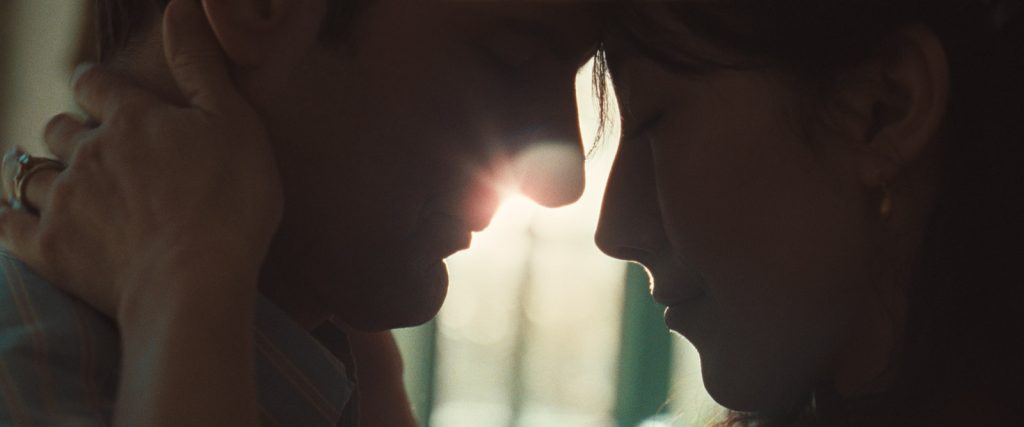
“Goodbye, Mrs. Selvig” was shot entirely at night and leaves the Severed floor to explore the world of the Outie characters. “Suzie pushed the night look and did some excellent work,” says Gagné. “I try not to get too involved because Suzie and David were working with the references, crew and tools selected for them and within certain guidelines but they needed the space to create.”
Gagné and Stiller could be approached with any questions, but made it clear to Lavelle, ”We’ve employed you for you”. She compares it to “shooting a section of someone else’s movie or babysitting their baby” and wanted to make sure she “got it completely right, especially as one shot in episode two is a direct continuity shot from the much-loved episode nine in season one”.
Gagné and Stiller told Lavelle they wanted to push contrast and “that dark should be dark”, so she focused on achieving the right balance of “not letting it get too dark while keeping up the energy”. Rialto was valuable for shots such as Mr. Milchick, manager of the Severed Floor, riding a motorcycle, the aerial view of which saw Donovan draw inspiration from nighttime sequences of a bike travelling along a dark road in Jonathan Glazer’s Under the Skin. “It was exciting to discuss how dark we could go and find the right balance,” says Lavelle. “Much of that is down to shooting tests and seeing how it feels; an important part of the process Jess and Ben established in season one.”
The series’ impressive aerial scenes – including shots of Milchick riding the bike – were captured by Flying Monster cinema drone services, mainly using DJI drones. They also filmed a striking night-time exterior sequence opening episode two of Helly walking along a corridor connecting two parts of the Lumon Building, captured using a BFD Systems S8 Octocopter carrying a Movi Pro head drone by drone pilot Dexter Kennedy who Lavelle found “incredibly precise” when shooting tracking shots from high up on 85mm lenses.
The long tracking shot of Helly was captured from outside the glass windows, and had to feel like a structured, locked off shot. Leven adds: “The intent was to shoot this all for real which is ambitious because the shot needs to be perfectly level while Helly walks through a doorway and an office, filmed from outside the building. So from a visual effects perspective, we stitched two drone shots together to make them perfectly stabilised.”
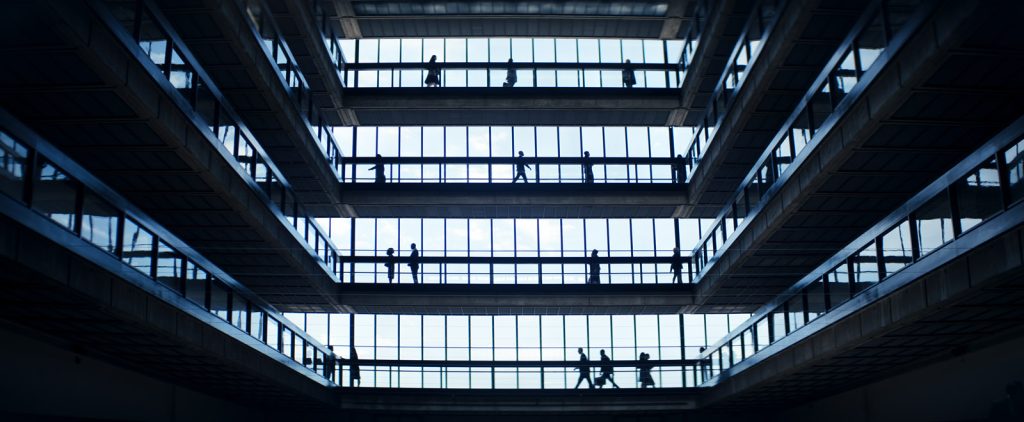
Lavelle enjoyed creating a striking, high-contrast look when shooting in a new boardroom set created for episode two. Built in the top floor of Bell Labs, the space where Helly meets Miss Cobel featured a 50’ ceiling practical, built by gaffer Kurt Lennig using LiteGear LiteMat Plus 4s.
Shooting episode six and nine saw David Lanzenberg ASC capture the emotion and fragility of characters, where “at times the quiet moments carried the most emotional weight”. Being a fan of surrealist films such as Luis Buñuel’s The Obscure Object of Desire and The Discreet Charm of the Bourgeoisie were great inspirations for Lanzenberg when shooting Severance, a series he was “completely mesmerised by and in awe of from a story and aesthetic standpoint”.
Lanzenberg worked on the episodes with director Uta Briesewitz — who used to be a cinematographer — quickly developing a shorthand and working with a list of reference films including John Frankenheimer’s Seconds, Klute, Parallax View and Dogtooth. “Otto Heller’s 1966 The Ipcress File also completely blew me away with its blocking and incredible composition and impacted how Uta and I framed and composed our episodes.
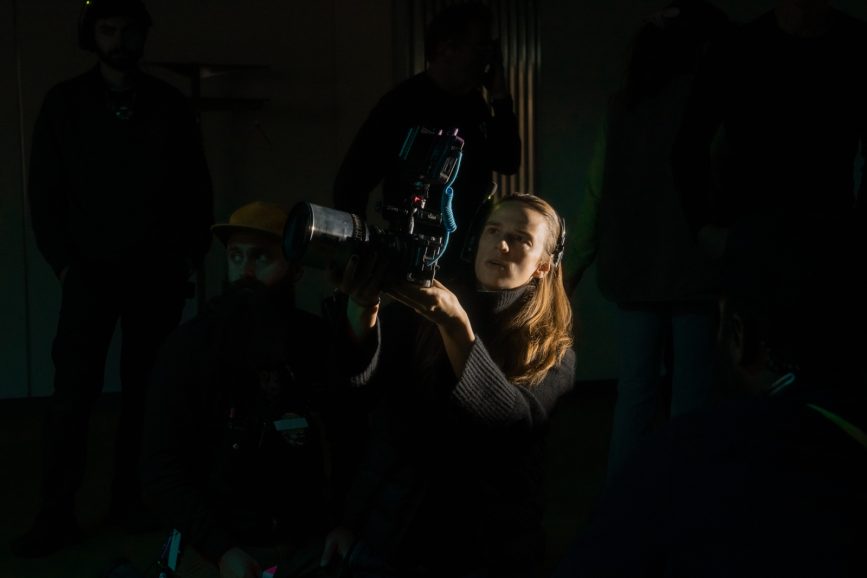
“We had to stay within the avenue of the show, be non-traditional in our coverage but also not repeat what previous episodes had done. Having specific parameters from film references, the meticulous attention to composition and sometimes sparce lighting made this show unique and challenging, you had to fire on all cylinders.”
Among the sequences of which he is most proud is a dinner scene in episode six featuring Christopher Walken, John Torturo and John Noble’s characters in a glass house, shot day for night. “We wrapped the house with black fabric so you did not see outside, creating a thick black mirror feel on the inside, lit mostly by one practical above the dinner table.”
The love scene between Mark and Helly also stands out in terms of the mood the DP and director aimed to convey. “Uta had the great idea they would make love under a clear plastic tarp dressed over two desks as if it was a camping tent in a conference room,” says Lanzenberg. “Lighting was only motivated from the adjacent hallway. So while lighting at Lumon is motivated mostly by overhead office fluorescent, finding different ways to convey mood within those parameters was a welcome challenge at times.”
From specific composition and point of view of the camera through to lighting being quite raw at times and incredible set design, Severance reminded Lanzenberg “that when all key parts of telling a story come together perfectly, the project has an ever-evolving life of its own”.
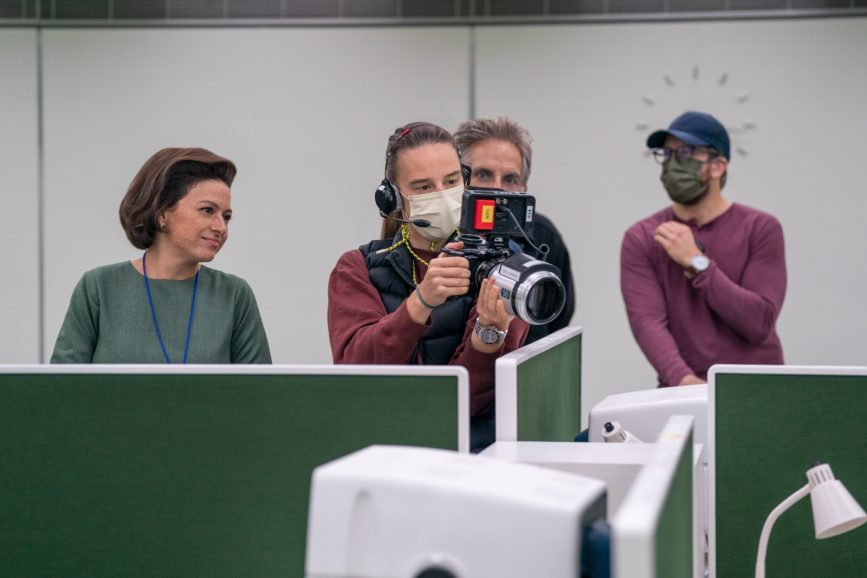
Camera advancement
Gagné’s visual approach has “quite a gritty and rough edge” that is often underexposed which she considers “the secret sauce for the show’s texture and its rough but realistic edge. We wanted to challenge this in season two and see how to create a more lush feel, which a bigger sensor and better imaging technology allowed”.
The Venice 2 release coincided with work commencing on season two and Stiller setting out to make the show have a “more high-end feeling”. “The camera’s sensor size also made it possible to use lenses in a different way to achieve a little less depth of field,” adds Gagné who was impressed by the Venice 2’s colour science.
Company 3 colourist Tom Poole, regarded by Gagné as “one of the best in the industry”, encouraged pushing the limits of the camera. The Rialto extension system also expanded possibilities when using Venice 2 in handheld situations in limited spaces.
Gagné worked with operators Scott Maguire (who also worked on season one and collaborated with B camera first AC Cameron Sizemore), Mark Schmidt (“Outie” A camera operator) and Peter Agliata to achieve ambitious shots. “They know the series intimately, so I ask them what they think will make the best shot,” says Gagné. “It took me a while to get to a place where I could let go of operating because I love it so much, but I had to learn to work with people who were better at it than me.”
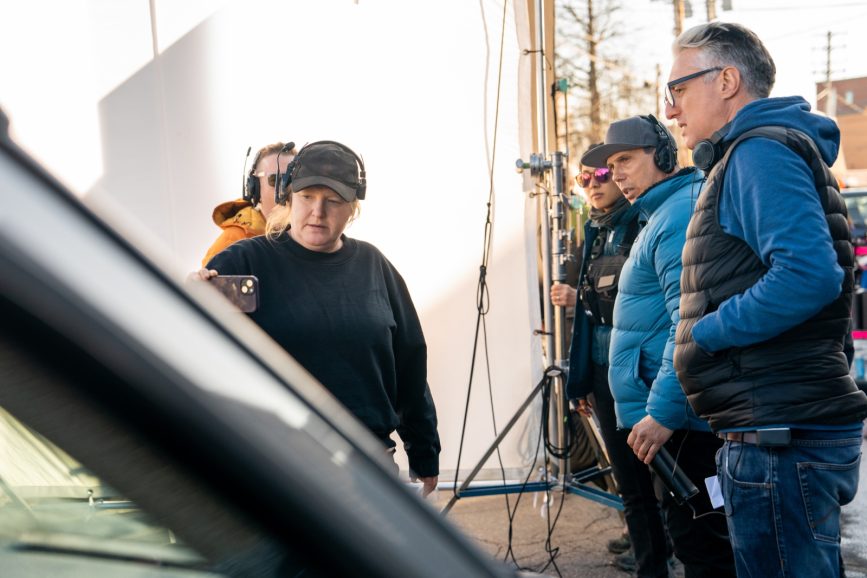
While digital capture was still deemed the best choice for season two, Gagné decided shooting on celluloid — on ARRI Arricam LT and Kodak Vision 500T stock — was appropriate for episode seven (“Chikhai Bardo”), which also marked her directorial debut.
“Ben originally asked if we should shoot Severance on film but I didn’t think it was right for this story about the clinical office world. Shooting tests in Panavision’s rental space showed Venice offered richness, amazing whites and made the technicality of the show simpler to achieve,” she says.
But when she discovered episode seven was based on flashbacks, Gagné felt film was suitable “because it evokes memory in our subconscious”. She did not want to use a filter or light completely differently to achieve the look, although she worked with more tungsten and avoided over stylised lighting in much of that episode. While Gagné was DP for the Lumon segments in episode seven, additional photography of the flashback sequences shot on celluloid was masterfully lensed by Max Goldman.
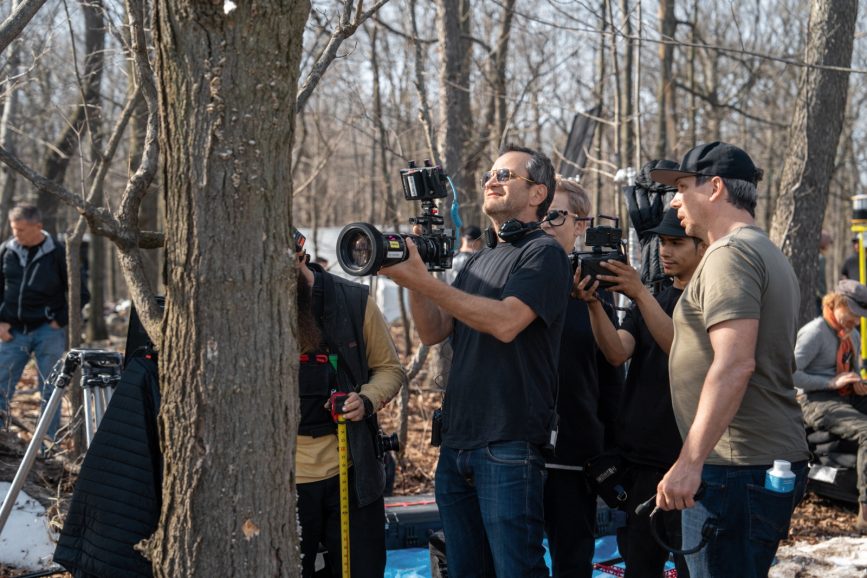
Illuminating the Lumon world
Gagné and gaffer Kurt Lennig’s lighting approach was dependant on collaboration with production design, especially the Innie world where so much was built into the set. 100 ARRI SkyPanel S60s with 15 DMX universes of data played a key role in the MDR office, featuring elaborate sequences controlled by programmer Kevin Casaletta. Hallway fixtures on the Severed Floor, of which there were hundreds, were made with LiteGear LED (RBG WC) ribbon and cards.
“Adding drama and excitement to top lit fluorescent white hallways is always a challenge,” says Lennig. “My fixtures and rigging crews spent hours building and troubleshooting before presenting them to Jess and Ben.”
Having worked on season one, Lennig has been immersed in the Severance lighting world since 2020. “The drive to make the show more interesting and dynamic, while keeping to the Severance look is the best part of the work,” he says. “Jessica came to sets with a strong vision following conversations with Ben. I enjoy puzzles, of which there were many including emergency lighting in hallways and marching band sequences.”
Location work in the Outie world was conceived of as side lit and practical driven. Lennig commends Gagné for “manipulating shooting schedules to take advantage of sun location and time of day, allowing the crew to use as much natural light as possible”.
For the management office of Cobel and Milchick, which is underground but with a light well, Lennig and his team used 4×6 Mylar mirrors to create the direct sun in the well and space lights above. In the challenging set they supplemented with sidelight off camera using Creamsouce Vortex8 through 8×8 diffusion or LiteMats at the top of frame.
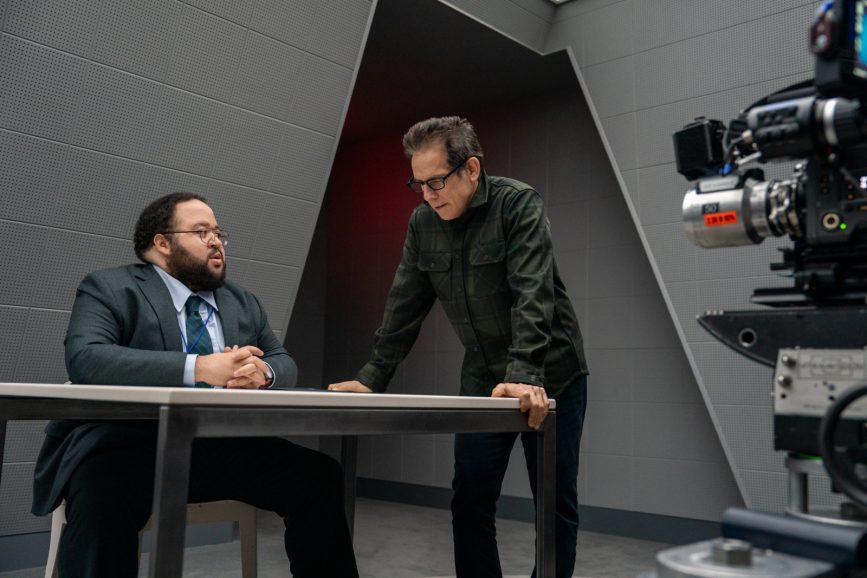
Irving’s night exterior dream in episode four also challenged the crew. “Our location abutted a parking lot, so we used a few Desisti Muse fixtures and arrays of Creamsouce Vortex8s in lifts and backlit for every angle,” says Lennig. “The atmosphere and snow provided enough fill and we handheld an Astera Helios Tube in a sock for the close-ups.”
For a demanding cat and mouse chase scene in episode seven, Gagné planned the route, and Casaletta and Lennig plotted out which footlights would be on at which step of the route, close to 100 cues, with two programmers on one console.
As Gagné gravitates towards large-scale lighting set-ups, even the more naturalistic and darker tone of the Outie world was lit using big sources which she could “bring down to texturise”. She also likes working with direct lighting and “breaking it down” rather than using bounce lighting, adopting a directional approach to lighting the outside world. “That’s the fun part I got to explore with key grip Johnny Erbes-Chan,” she says. “I’m into harsher, sculpted lighting, so in Mark’s house, there were always shapes. Ben and I like high contrast and I light the space rather than the actor to give them freedom.”
Outie to Innie
Lens choice is one of the most crucial parts of Gagné’s world building process, viewing lenses as “how we see the world and more important than the camera sensor, rendering the image on a another level”.
“During tested we asked Panavision for everything possible in the anamorphic world. And, like many cinematographers, I wanted to work with the C Series lenses, which we had a good experience with from season one. Each lens has a signature style and feel, so it’s about choosing the right anamorphics that can live within a family, and don’t jar when you go from one to another.”
The real challenge was finding spherical lenses for wider shots which did not have as much aberration but still felt as textural as anamorphic. “The 20mm H Series was used for wider work within the Lumon world, but not much for the outside world. We also worked with the 50mm to 500mm Panavision APZ which I love; it’s not as crisp and sometimes falls apart. One magical close focus 50mm C Series we called the “Silver Bullet” was the lens of the show everyone wanted.”
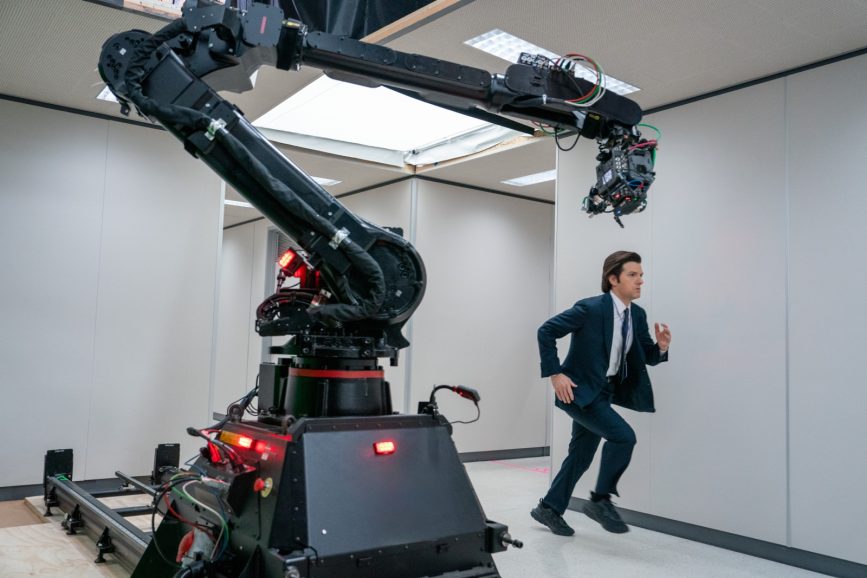
Specialist lenses included the Cine Magic Revolution probe for sequences such as eye pull back shot. For an ambitious, predominantly practically shot sequence in episode seven moving between locations and seeing the camera move through computer cables relied on an Optex Excellence probe and 10mm T2.1 ARRI Ultraprime which “was the best for the intense digital zoom needed and resulted in little distortion”.
Stiller wanted Gagné to attempt the shot practically instead of creating elements in CG, so the team devised complex techniques in order to achieve capturing the visuals in camera. “Working with the special effects team, we built a mechanism and system that weaved the cables around a probe lens as we boomed down the camera to create movement, ” says Gagné. “It required an immense collaborative effort from everyone including production design, set dressing, grip, lighting and camera including first AC Cameron Sizemore, 2nd AC Frank Milea, camera operation Scott Maguire and Bolt operator Dan Gottesman. The only proper CG element is the grate coming out of the column, some clean-up on the column and extension of the MDR ceiling,” she explains.
Kurt Lennig lit the inside of the cable and column using fibre optic cables illuminated with LED Lekos from both ends, a few hidden strips of LED ribbon and a little supplemental MDR light from above.
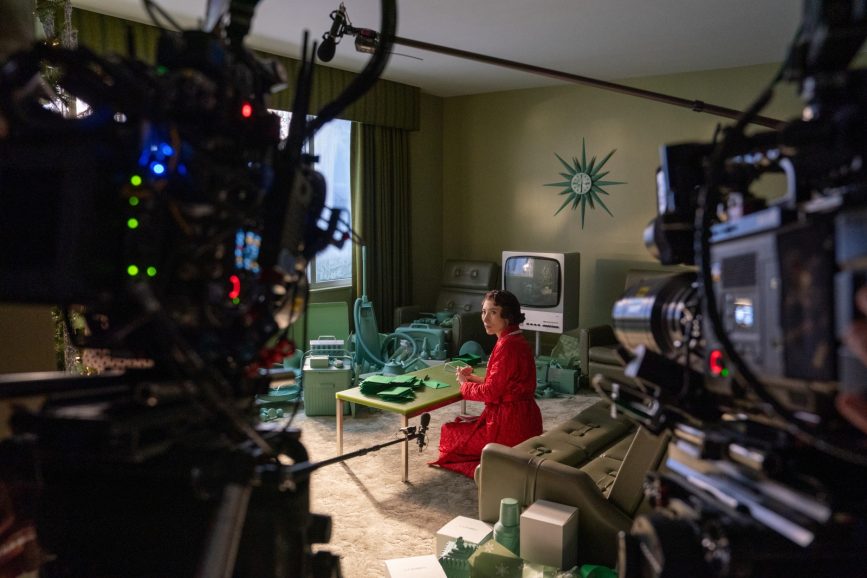
Transitions as characters move between the Outie to Innie world — their head appearing to morph and change size while the elevator behind them moves — has become a Severance trademark effect. While some visual effects enhancement is used and season two introduces more worlds to incorporate behind the actor, the technique is still based on practical techniques and the original idea of blending two aesthetics together.
“As there’s wide lensing on the Innie floor and longer lensing in the Outie world, we wanted to merge that experience,” says Gagné. “Other filmmakers used this dolly zoom technique, but for us the reasoning behind it and merging these two cinematic languages was key.”
Like the rest of Severance, the idea was meticulously planned and desired effect achieved using a Kuper computer, developed by motion control specialist Anthony Jacques. “When Hitchcock and Spielberg used the dolly zoom, it was done by hand and the grip pushed while somebody else turned the lens. When we did it, computer software calculated the in-camera zooming so it moved exactly the right amount while the lens was turned and someone manually operated the dolly, automatically based on motion control sensors,” says Leven.
“But what happens in reality is, someone’s nose stretches a little too much, or the backgrounds don’t move as much as you want. So it’s always shot 90% with a real zoom, and then we replace the background. Just like everything in the Severance world, it needed to be precise to achieve exactly what is needed every time.”
